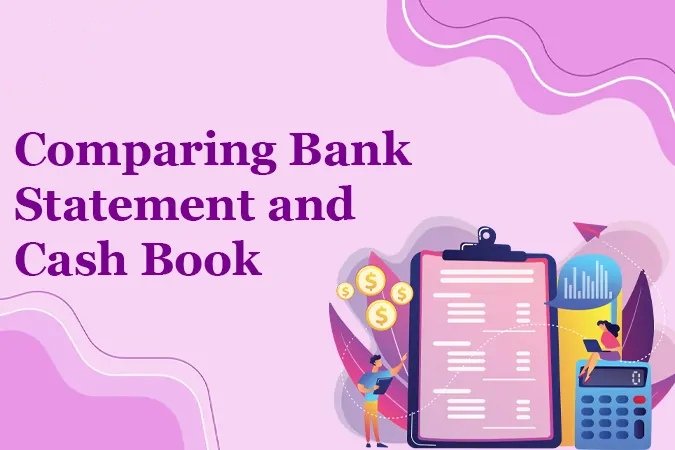Who Is Responsible for Fixing Mistakes in Bank Reconciliation? A Complete Guide for Accountants and Bookkeepers
bank statement, reconcile bank statement, bank reconciliation statement, rejected by bank due to name mismatch, pf bank kyc name mismatch error, pf bank kyc name mismatch, pf bank kyc rejected name mismatch, quickbooks tips and tricks, pf bank kyc rejection reasion name mismatched, pf bank rejected due to mismatch in name, bank reconciliation discrepancy in quickbooks, bank kyc rejected due to mismatch in name, quickbooks online banking matching transactions, pf bank kyc rejected due to mismatch in name

Introduction: When Bank Statements and Books Don’t Match
Every business runs on numbers, and those numbers must be correct. But what happens when your bank statement doesn’t match your cash book? That’s where the Bank Reconciliation Statement (BRS) steps in. And when mistakes creep into that process, the big question arises: who is responsible for fixing them?
This guide is written for those just starting out in accounting or bookkeeping, and for small business owners who manage their own accounts. It will help you understand not just who is responsible, but how to fix those mistakes, why they happen, and what steps can be taken to prevent them.
What Is Bank Reconciliation?
Bank Reconciliation is the process of comparing the balances in an organization's accounting records (usually the cash book) to the corresponding information on a bank statement. The purpose is to ensure both records are accurate and complete.
It's like having two mirrors reflect the same object. If the images don’t match, something is off. That ‘off’ needs to be found and corrected.
Why Do Mistakes Happen in Bank Reconciliation?
Mistakes in BRS are common, especially in fast-moving businesses. These errors can arise due to:
-
Missed entries in the cash book
-
Delayed updates by the bank
-
Wrong amounts entered manually
-
Duplicate transactions recorded by mistake
-
Bank charges or interest not recorded yet
Even a single unnoticed error can affect closing balances, reporting, audits, and trust in financial data.
Who Is Responsible for Fixing These Mistakes?
The Primary Responsibility: The Accountant or Bookkeeper
The person responsible for preparing the books is the first line of defense. This is usually the accountant or bookkeeper working in-house. They are expected to:
-
Maintain up-to-date and accurate records
-
Regularly perform reconciliations (usually monthly)
-
Identify and correct mismatches
A good bookkeeper knows that reconciliation is not optional. It is the health check of the financial system.
The Second Layer: Internal Senior Accountant or Accounts Manager
Once the accountant has prepared the BRS, it is reviewed by a senior accountant or manager in the finance department. They ensure:
-
The corrections made are valid
-
There is proper documentation
-
No fraud or hidden entries are present
The External Reviewer: Chartered Accountant (CA) or Audit Team
If the books are audited, the CA or audit team will verify whether:
-
BRS was regularly done
-
Errors were corrected properly
-
Financial integrity is maintained
However, the CA or auditor is not supposed to fix routine mistakes. Their role is to highlight if something was not fixed properly or on time.
So, to answer simply: The person who prepares the accounts is responsible for finding and fixing BRS errors. But the responsibility is shared in layers depending on the size of the organization.
What Is the Process to Identify and Fix BRS Errors?
Step 1: Gather the Documents
You need two things:
-
The latest bank statement
-
The company’s cash/bank book
Ensure both are for the same period (usually a full month).
Step 2: Compare Each Entry
Start line by line:
-
Match deposits
-
Match withdrawals
-
Look for unmatched entries
Step 3: List Out Differences
Create a simple table:
-
Transactions recorded in the bank but not in the books
-
Transactions recorded in the books but not in the bank
Step 4: Investigate the Cause
Ask:
-
Was it a missed entry?
-
Is it a timing difference (like a cheque issued but not presented)?
-
Is it a bank charge, interest, or auto debit?
Step 5: Make Corrections
Update the books:
-
Enter missing items
-
Correct wrong figures
-
Remove duplicates
Ensure entries are backed by documents like bank advice, cheque copies, or payment proofs.
Step 6: Re-check the Balances
Once corrections are made, balances should match. The difference should either be zero or due to known timing issues.
Step 7: Record the BRS
Maintain a proper Bank Reconciliation Statement showing:
-
Opening balance
-
Additions
-
Subtractions
-
Adjusted closing balance
Real-World Example for Beginners
Scenario: Your cash book shows a bank balance of Rs. 80,000 on 30th June. The bank statement shows Rs. 85,000.
On Checking:
-
You forgot to record bank interest of Rs. 1,000
-
A customer deposit of Rs. 4,000 is shown in the bank, but you haven’t recorded it yet
Action:
-
Record both in your books
-
Recalculate your closing balance: Rs. 80,000 + Rs. 1,000 + Rs. 4,000 = Rs. 85,000
Now your cash book and bank match. Reconciliation is complete.
Why Fixing BRS Mistakes Matters Deeply
-
Small Errors Lead to Big Problems: A small error today can lead to huge reporting problems at year-end.
-
Financial Decisions Depend on Correct Balances: Wrong balances mean wrong decisions.
-
Credibility is Built on Accuracy: Whether you’re an accountant or a business owner, trust grows when your numbers are right.
-
Auditors Check Reconciliation Closely: Mistakes not fixed on time raise red flags during audits.
Can Software Fix These Mistakes Automatically?
Modern accounting software like Tally, Busy, QuickBooks, and Zoho Books offer auto-reconciliation tools. But they are not perfect. Manual checking is still required.
No software can replace the human understanding of why a transaction is missing or wrongly recorded.
Common Mistakes to Avoid While Doing BRS
-
Ignoring small differences
-
Not performing BRS regularly
-
Not recording bank charges or interest
-
Assuming the bank is always right
-
Failing to get documents for every correction
Tips to Improve Your Bank Reconciliation Skills
-
Practice monthly with real data
-
Keep transaction slips and documents safe
-
Learn your company’s accounting software deeply
-
Ask questions if you don’t understand a transaction
-
Stay alert to common fraud signs or fake entries
Final Words: What Every Beginner Must Remember
Bank Reconciliation is not just about matching numbers. It’s about building discipline, honesty, and trust in your financial system. Mistakes are natural in any manual process. But responsibility is not just about correcting them; it’s about preventing them next time.
If you are learning accounting or bookkeeping, mastering BRS is your first step toward becoming a reliable and respected professional. If you are a business owner, never underestimate the value of a clean, regularly reconciled bank book.
Mistakes in reconciliation are not signs of failure. They are signs that someone is checking, someone is watching, and someone cares.
And that someone should be you.
What's Your Reaction?





















